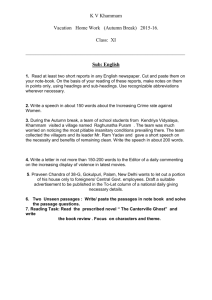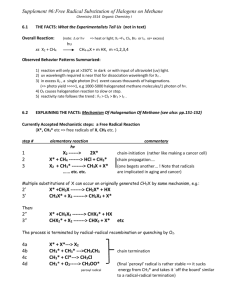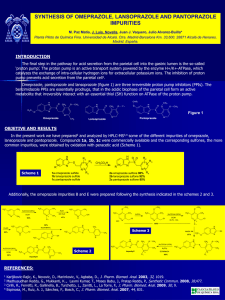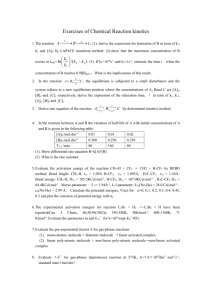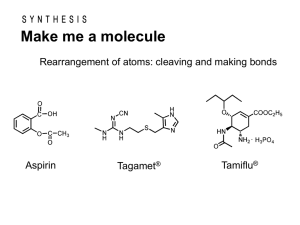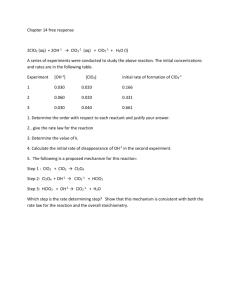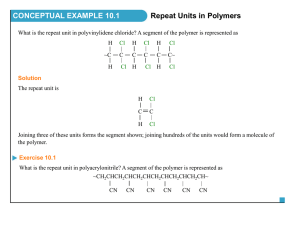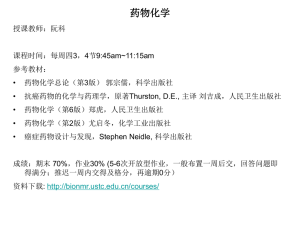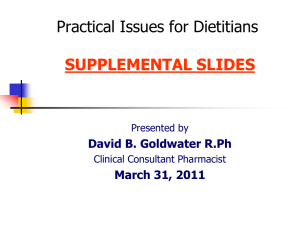Antiulcer drugs
advertisement
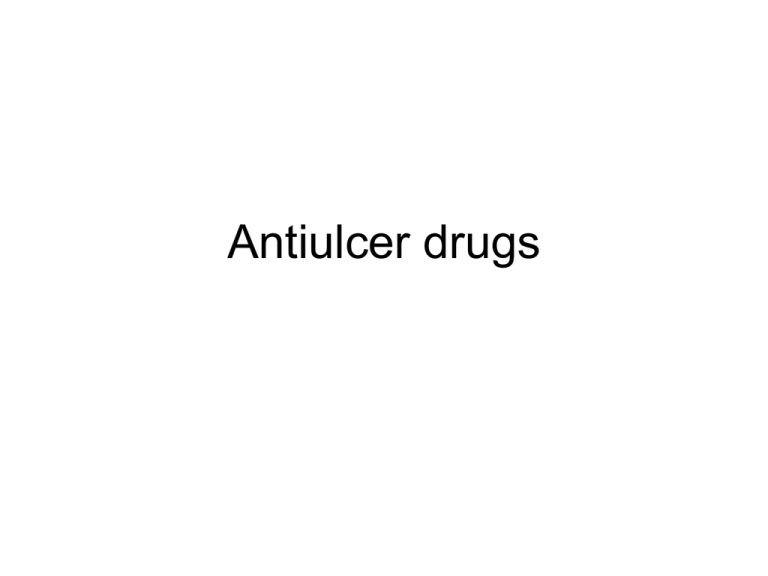
Antiulcer drugs Peptic ulcer disease (PUD) Ulcers are localized erosions of the mucous membranes of the stomach or duodenum. It is not known how these ulcers arise but the presence of gastric acid aggravates the problem and delays recovery. Mechanism of gastric acid secretion: Secretion of acid (HCl) is regulated by the action of various mediators at the receptors including: 1- Histamine at H2 receptor (cellular). 2- Gastrin at the G receptor (blood). 3- Acetylcholine at the M2 receptor (neuronal). Treatment: Medications that are used for treatment of peptic are: 1- Antacids. 2- Anticholinergic or antimuscarinic agents. 3- H2 receptor antagonists. 4- Proton pump inhibitors (inhibitors of H+ / K+ ATPase). 5- Chemical compelexation. 6- Prostaglandins (PGs). H2 antagonists: Burimamide, metiamide, cimetidine, ranitidine, famotidine, nizatidine. They act as blockers for H2 receptors that are present in stomach and uterus. The first drug that block H2 receptors is burimamide that is upon molecular modification leads to metiamide which is 10 times more active as burimamide. H N H N N NH Burimamide CH3 CH3 S HN H N H N S N CH3 S Metiamide cimetidine N-cyano-N--methyl-N =- -[( - methylimidazol- -yl)methylthio]ethyl guanidine } * Administered mg per day. * disadvantages: ) not completely absorbed if administered with antacids or sucralfate. ) inhibit the liver microsomal enzyme system CYP , what leads to decrease metabolism of phenytoin, theophylline, diazepins. ) affect potency in male. ranitidine N- -[ -(dimethylaminomethyl)furfurylthio]ethyl-N - -nitro- , -ethendiamine. - -methyl * administered mg per day * weak inhibitor of liver microsomal enzyme system so it can be administered with drugs comntraindicated in case of cimetidine. famotidine -[ -(diaminomethyleneamino)thiazol- -yl]methylthio -N-sulfamoylproionamidine * administered mg once or mg twice daily. SAR of H2-antagonists. 1-immidazole ring is not required for competitive antagonism at the H2-receptor, other heterocyclic rings can be used like furan and thiazole. 2-Separation between the nitrogen atom and heterocyclic ring by 4 carbon atoms gives optimum activity . 3-The terminal nitrogen atom should be polar and non basic for maximal 4-antagonistic activity, while groups that are positively charged at physiologic ph have agonistic activity. 4-Antagonistic activity is inversely proportional to hydrophilicity of the nitrogen atom, but the hydrophilic nitrogen group in ranitidine is an exception. proton pump inhibitors Mechanism of action These agents work by irreversibly inhibiting an enzyme complex called the proton pump (H+/k+ ATPase). This enzymic pump is present in the membranes of parietal cells and is responsible for releasing HCl into the stomach as a final step in acid secretion. Y N S CH2 N X O N H X Y Omeprazole 5-OCH3 3- CH3 , 4-OCH3 , 5-CH3 Lansoprazole H 3- CH3 , 4-OCH2 CF3 Pantoprazole b-OCHF2 3- OCH3 , 4-OCH3 Rabeprazole H 3- CH3 , 4-OCH2 CH2CH2 OCH3 omeprazole -methoxy- -([( -methoxy- , -dimethyl- -pyridinyl)methyl]sulfinyl H-benzimidazole. } **omeprazole that can block H+ / K+ pump in the stomach, Used if the other strategies are useless…


